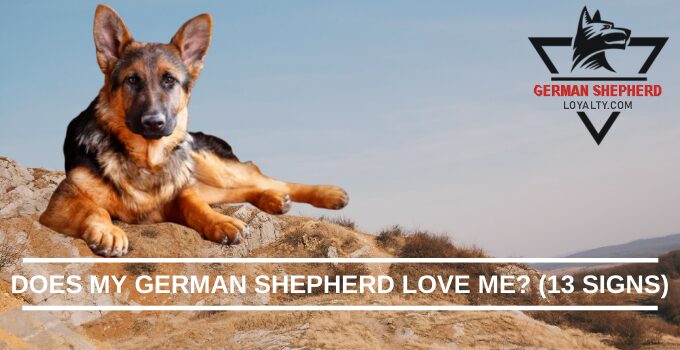A dwarf German Shepherd is not a special developer or hybrid canine breed. Instead, the term “dwarf German Shepherd” refers to a German Shepherd pet that has genetic dwarfism.
 While dwarfism is a problem that is well known in individuals, fewer pet proprietors recognize that dwarfism can also affect pooches.
While dwarfism is a problem that is well known in individuals, fewer pet proprietors recognize that dwarfism can also affect pooches.
Too, since certain pet breeds such as Dachshunds and also Corgis have been bred to have actually shortened legs, this is a various kind of dwarf called chondrodysplasia.
German Shepherds are far more likely to inherit pituitary dwarfism, a condition that can be life-limiting in many different means. Continue reading to learn more about the dwarf German Shepherd, what the indication and also symptoms are, and also just how it affects GSDs.
Contents
German Shepherd Dwarf
A dwarf German Shepherd is a canine that has actually inherited two copies of recessive genetics that is recognized to cause dwarfism in canines.
The condition is most frequently associated with “backyard” breeders or pup mill breeders who are not knowledgeable about or inclined to do pre-breeding health and wellness testing examinations to dismiss handing down the condition.
Dwarf German Shepherds can have a range of wellness issues. The most typical early warning sign is a GSD pup’s failure to expand past a certain size.
See a Dwarf German Shepherd Dog
Dwarfism is a problem that can affect pet dogs along with people. In this short owner-made YouTube video, you can satisfy a dwarf German Shepherd that doesn’t seem to recognize he has dwarfism.
You can watch him running as well as playing and cuddling and doing all the important things German Shepherd pets do.
While his condition, pituitary dwarfism, is rare in the majority of varieties, it affects approximately 20 percent of all German Shepherd pet dogs according to the Saartje Foundation.
What Is Pituitary Dwarfism in German Shepherd Dogs?
As Antagene clarifies, pituitary dwarfism is not a benign condition that simply causes a smaller than regular German Shepherd canine.
It is a condition that is connected to a problem with the pituitary gland where the gland itself stops working to expand and establish appropriately.
Meet the pituitary gland in dogs
A dog’s pituitary gland is equally as essential to their growth as a human’s pituitary gland is crucial to our development.
As Merck Veterinary Manual details, the canine pituitary gland lies at the base facility of the dog’s mind.
In lots of ways, the pituitary gland resembles the “master gland” of the endocrine system. It controls the activities of various other glands in the endocrine system which consequently controls development throughout the body.
The pituitary gland as well as its secondary glands produce important hormonal agents that inform the various other parts of the body what to do and just how much to expand and also when to stop growing.
So when the pituitary gland itself doesn’t create correctly, those other areas of the body do not develop properly either. And also numerous important functions such as metabolism and also reproduction likewise do not occur as they should.
This is primarily what is occurring when a German Shepherd canine acquires pituitary dwarfism.
Why Does Pituitary Dwarfism Especially Effect the German Shepherd Dog Breed?
As Merck Veterinary Manual clarifies, pituitary dwarfism is taken into consideration to be a juvenile-onset canine condition. Simply put, it starts in puppyhood.
There are 2 major reasons the pituitary gland may quit developing properly in puppyhood.
The initial reason is that the development is stopped briefly as a result of a growth form on the gland itself. The second factor is that the gland itself merely does not form appropriately.
Pituitary dwarfism influences much more German Shepherd pets than any other pet breed, although certain various other types may periodically develop the condition as well. “Pastoral” functioning dog breeds are a lot more generally impacted.
Pituitary dwarfism can affect male and women German Shepherd pups similarly.
What Happens to a Dwarf German Shepherd?
There is a variety of concerning health and wellness effects to expect when a German Shepherd pup is born with pituitary dwarfism.
The condition shows up extremely early in life usually by the age of two months old Most of the time, the puppy is not expected to live any longer than five years old and also may pass at a younger age.
So allow’s have a look at a basic timeline of exactly how pituitary dwarfism influences a German Shepherd puppy.
Two to three months old
The German Shepherd puppy starts to decrease in its development.
This becomes visible around the age of two months as littermates keep getting bigger and also the dwarf German Shepherd pup stops growing at an equivalent pace.
Three months to one year old
The dwarf German Shepherd pup does not drop out of the pup layer like their littermates yet keep the soft puppy layer.
The layer may end up being progressively thin and also, in time, shed out rather, yet the grown-up layer does not expand in. Instead, the skin comes to be flaky and smudged.
The coat that remains (if any kind of) is still soft like the puppy layer. For the most part, the young puppy will certainly preserve a larger quantity of fur just on the head as well as hocks.
The puppy teeth might or might not fall out yet the grown-up teeth commonly fail to expand in. If they do be available, they will be late.
For male puppies, the reproductive organs will be smaller sized than regular and the testes might not create properly or descend. For female pups, the initial warmth cycle may be postponed or stopped.
One year to four years old
Despite a life span that is normally 5 years or less, a dwarf German Shepherd puppy can quickly take up to four years to complete what growing they can do.
The soft cartilage material at the top of the leg bones (the “growth plates”) can use up to four years to close fully and also harden.
Considerable neurological and spine problems can be existing as a result of the failure of the spine to form typically, specifically in the first 2 vertebrae in the top (cervical) back.
The instability in this part of a dwarf German Shepherd pet dog’s spine can trigger paralysis, pain, activity problem, and fatality.
One more unfortunate negative effects of pituitary dwarfism in German Shepherd pet dogs is stress and anxiety or aggressiveness.
Vice informs the real story of the trash of six GSD young puppies, of which 3 were born with the problem.
Dwarf German Shepherd puppies are a lot more likely to have behavioral and also personality problems that can trigger unrestrained hostility and/or severe splitting up anxiousness.
Dwarf GSDs that develop either of these problems can behave in really hostile means in the direction of people as well as various other pets.
How Is Pituitary Dwarfism in German Shepherds Prevented?
Pituitary dwarfism is what is called an inherited (genetic) autosomal recessive disorder.
What this means in easy language is that both German Shepherd parent canines must add a duplicate of the gene in order for a pup to have an opportunity of acquiring pituitary dwarfism.
The reality that the incidence of pituitary dwarfism in the German Shepherd pet breed today is approximated to be as high as 20 percent is informing. Many German Shepherd canines are carriers of the disease.
However, as the Veterinary Information Network (VIN) clarifies, there is a pre-breeding genetic screening test that can take a blood draw as well as discover whether a potential parent pet dog is a provider of the gene. If the canine is verified as a provider, that canine needs to not be bred.
This is the only reputable means to avoid a puppy from inheriting pituitary dwarfism.
This is why dwarf German Shepherds are connected with supposed “yard” dog breeders– less knowledgable or periodic GSD breeders– and puppy mills.
These kinds of breeders are much less most likely to put in the time and most likely to the expenditure of having pre-breeding genetic screening examinations carried out before permitting their canines to mate.
Even if a dog breeder is definitely sure their dog originates from a full-blooded family tree that does not bring the gene, as this Vice tale highlights, it is still crucial to have the pre-screening health test performed.
How Is Pituitary Dwarfism in German Shepherds Transmitted?
German Shepherd pups that have pituitary dwarfism are most likely to struggle with a variety of health issues throughout their short lifespans.
However, not every puppy that is a dwarf German Shepherd will always have the specific same collection of wellness symptoms.
To that point, a pup that gets professional veterinary treatment, as well as ideal treatment, is most likely to experience less severe health signs along the road.
There is no treatment for pituitary dwarfism in any pet dog breed. However, there are therapies that can reduce symptoms, and in some procedures supplement the crucial hormonal agents that the malformed pituitary gland is not generating naturally.
According to GSD Pituitary Dwarfism, there are two ways that pituitary dwarfism can turn up in a pet.
The dog is a genetic carrier only
When a pet dog is a hereditary service provider of pituitary dwarfism just, this implies that the canine obtained just one duplicate of the recessive gene for the problem.
When a condition is called a “recessive” disease, this implies that it takes two duplicates of that gene to create an active illness.
But providers, despite the fact that they do not show any signs or signs of the illness itself, can pass it on to their puppies if the other parent pet also is a carrier and likewise passes genetics on to a german shepherd dwarfism puppy.
The dog has active pituitary dwarfism
When a pet obtains 2 copies of the pituitary dwarfism gene, that is when you will see the wellness symptoms that we resolved previously in this write-up.
Not just is it likely that a dwarf German Shepherd puppy will grow up to be sterile (not able to breed) however these canines must never ever be permitted to reproduce.
How Is Pituitary Dwarfism in German Shepherds Treated?
Because pet dogs that inherit pituitary dwarfism have actually malformed and malfunctioning pituitary glands, the primary treatment involves supplementing the missing hormones with fabricated resources.
By supplementing with fabricated (artificial) versions of some of the missing out on hormones, a german shepherd with dwarfism dog with pituitary dwarfism may have much less severe signs of the condition.
As ResearchGate clarifies, treating dwarf GSD pups with artificial thyroid hormones can aid reduce symptoms as well as promote the growth of the coat as well as adult teeth.
Making use of artificial or porcine (pig) growth hormonal agents and/or progestins can likewise be supportive of advertising continued growth and also development as well as a much more normal layer.
Nonetheless, it is necessary to note that supplementing with artificial hormonal agents can also present side effects that might create further pain to the dwarf German Shepard dog. Skin disease, locations, and also cysts are a few of the many negative effects associated with these therapies.
One more treatment that can rather advertise even more normal development is to postpone the spay or neuter procedure.
This allows the dwarf German Shepherd puppy to get the advantages of ongoing reproductive hormones at whatever level the dog’s body might be creating these naturally.
However, to stay clear of any kind of risk that the dwarf GSD may unintentionally mate with one more canine as well as pass along the condition, the owner should agree to be extra-vigilant about maintaining the pet dog away from various other undamaged canines.
Also, by choosing to postpone the spay or neuter procedure, an intact dwarf German Shepherd canine that establishes extreme anxiousness or aggression may have even worse spells of these signs and symptoms, which might present a danger to the owner as well as the area.
Daily Life With a Dwarf German Shepherd Dog
Greater than a couple of dwarf German Shepherd dogs have actually amassed considerable followings on social networks for their charming perpetually puppy-like appearance.
This has actually aided to increase understanding of pituitary dwarfism in canines too.
Nonetheless, what most people do not see is the trouble an owner has to go through enjoying their young puppy suffer via rounds of repeated treatment as well as manage the health and wellness signs as well as the shortened life expectancy of this illness dwarf shepherd.
With mindful reproduction, pituitary dwarfism in dwarf gsd pet dogs can be stopped.


